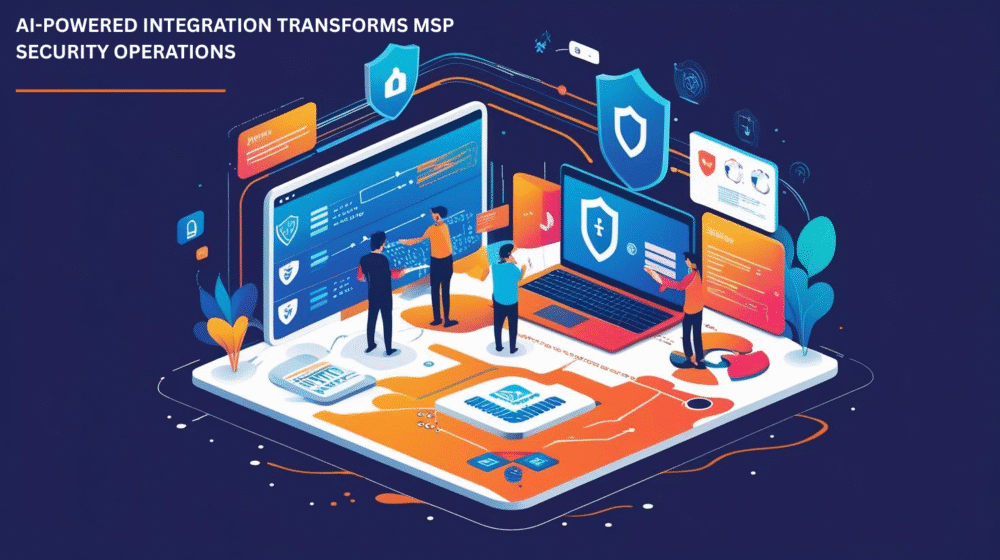As cyber threats continue to rise and client environments become increasingly diverse, Managed Service Providers (MSPs) face mounting challenges in managing secure, reliable, and responsive operations. Each client typically operates a unique set of tools—SIEMs, SOARs, cloud services, and endpoint security platforms. The result? A fragmented, difficult-to-manage security landscape that puts pressure on MSPs to deliver seamless, 24/7 protection.
This is where an AI-powered integration platform becomes a game-changer.
By consolidating security tools, streamlining data flows, and enabling intelligent automation across multiple client environments, an AI-powered integration platform can transform the way MSPs operate their Security Operations Centres (SOCs). The result is faster incident response, improved visibility, and reduced overhead—without compromising on flexibility.
The Complexity Facing MSP SOCs Today
Modern MSPs must support multiple clients, each with unique infrastructures and security stacks. These may include:
- Different SIEM platforms like Splunk, IBM QRadar, or Microsoft Sentinel
- Varied SOAR implementations
- Legacy on-premise environments alongside modern cloud-native deployments
- Inconsistent data formats, compliance standards, and reporting expectations
Without a unifying layer, SOC teams must toggle between dashboards, normalise log formats manually, and maintain multiple workflows—making incident detection and response slow, inconsistent, and expensive.
What Is an AI-Powered Integration Platform?
An AI-powered integration platform is a centralised system designed to unify data, tools, and workflows across disparate systems. It uses artificial intelligence to automate:
- Data collation and representation
- Alert consolidation and summarization
- Self-service automation
- Reporting, compliance, and audit trail management
Unlike traditional middleware, it offers intelligent orchestration, reducing the workload on human analysts and improving decision-making through data-driven insights.
Key Benefits for MSPs and Their SOCs
- Centralised Visibility Across Clients
An AI-powered integration platform pulls logs, alerts, and threat intelligence from all connected systems—no matter the source—and presents them in a unified interface. SOC teams can monitor all clients from a single pane of glass, improving response times and reducing alert fatigue.
- Simplified Integration with Existing Tools
Most platforms come with out-of-the-box connectors for leading SIEMs, SOARs, firewalls, EDRs, and cloud providers. This makes onboarding new clients quicker and ensures that MSPs don’t need to overhaul their clients’ existing security investments.
- Faster Response with Self-service automation
AI-powered analysis can detect patterns across large volumes of data from multiple clients, spotting threats that would otherwise go unnoticed in siloed environments. Automated playbooks and contextual alerts help security analysts respond faster and more accurately.
- Reduced Operational Costs
By automating repetitive tasks and consolidating tooling, MSPs can scale their operations without proportionally increasing their workforce. SOCs can do more with less—while also reducing the risk of human error.
- Better Compliance and Reporting
For MSPs operating in regulated industries or serving clients with strict compliance needs, an integration platform ensures that data is properly tagged, stored, and reported according to client-specific policies. Custom dashboards and reporting modules allow for real-time and scheduled compliance reports across all clients.
Real-World Trends Supporting Integration Platforms
The global push towards cyber resilience is forcing MSPs to adopt smarter infrastructure. According to Gartner, by 2026, over 60% of SOCs will adopt AI-driven automation and integration platforms to manage their multi-tenant environments.
Similarly, a 2024 report by Cybersecurity Insiders found that 72% of MSPs struggle with managing data across client environments—particularly those with hybrid or cloud-native architectures. This underscores the need for a scalable solution that brings all security operations into one ecosystem.
The Future Is Integrated, Intelligent, and Scalable
As MSPs continue to grow and diversify their client base, they need tools that enable them to stay agile without sacrificing effectiveness. An AI-powered integration platform not only simplifies how SOCs operate—it enhances the value MSPs deliver to their clients.
With increased visibility, automation, and scalability, MSPs can confidently offer proactive, high-performance cybersecurity services across a wide range of industries and technologies.
Conclusion
In a world of escalating cyber threats and growing operational complexity, MSPs can no longer afford to rely on fragmented tools and manual workflows. By adopting an AI-powered integration platform, they can revolutionise their Security Operations Centre—ensuring smarter decisions, faster responses, and stronger client relationships.




